33 years after U.S. invasion, Panama vows to finally honor, invest in besieged neighborhood
By Matty Wasserman
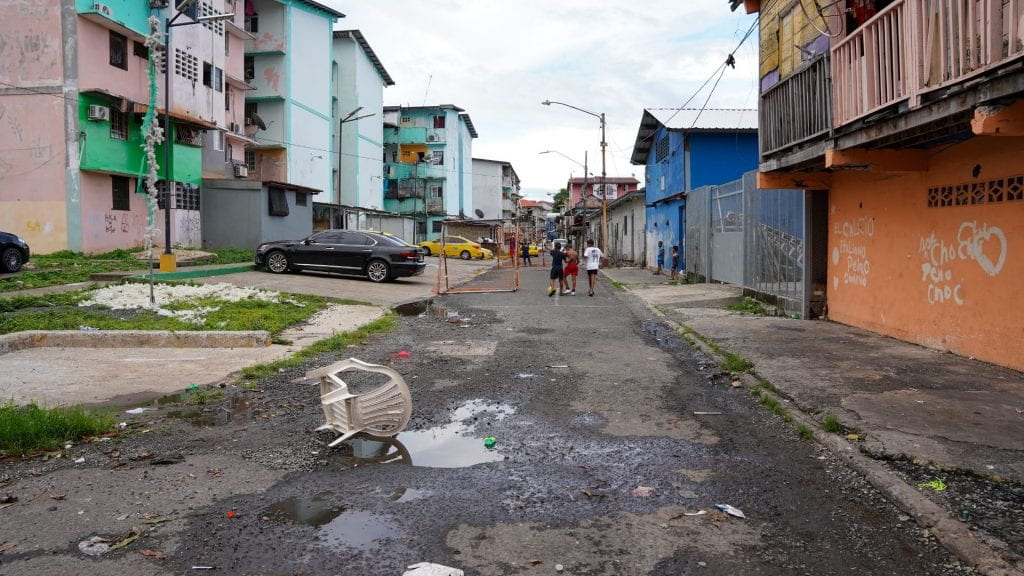
PANAMA CITY, Panama – Parque Amelia Denis De Icaza is a quiet place. Located in the heart of El Chorrillo, one of Panama City’s poorest neighborhoods, it spans the size of a full city block. Inside the blue-painted fence that encloses the grounds, dogs sniff their way through grassy fields and children roam on bicycles.
Today, Parque Amelia is the site of basketball courts, gazebos and fruit trees. But it was once the military headquarters of Panamanian dictator Manuel Noriega, and, in 1989, was the central target of a United States military invasion that resulted in a four-day onslaught.
For all that stands in Parque Amelia today, there are no markers of the attack that devastated the neighborhood of El Chorrillo.
“Those children out there now, they don’t even know what it is they are standing on,” Fernando Contreras said through a translator on a recent May afternoon, pointing to a group of children playing in the park. “This is a nice park, but they need to build something here, to always remind the people of what happened.”
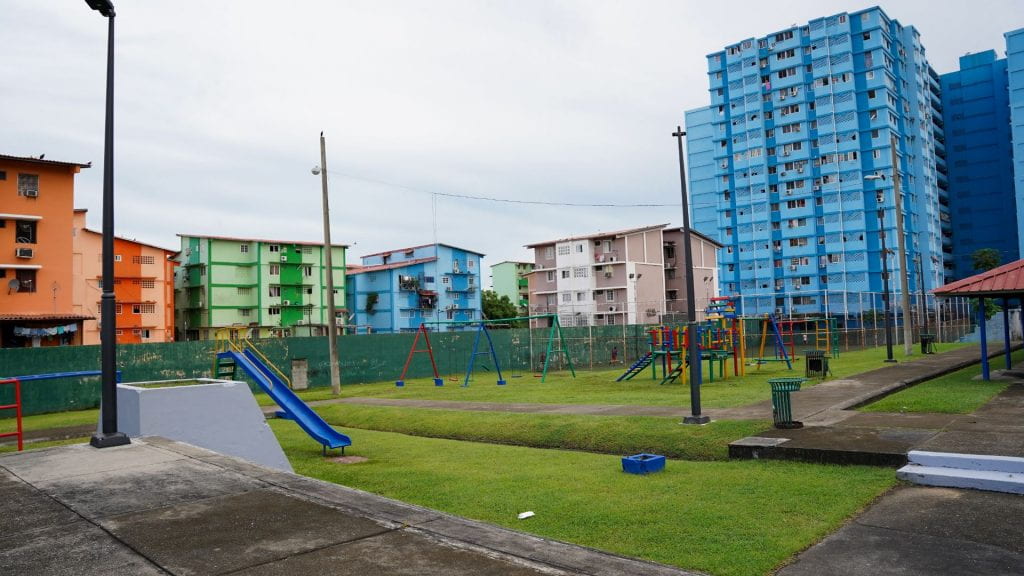
Contreras, now 60, was 28 years old when the invasion destroyed his hometown. The attack transformed El Chorrillo into a warzone and set the city ablaze overnight. The U.S. military officially lists the death total at 516. However, human rights groups estimate the number was likely in the thousands.
On March 31, Panamanian President Laurentino Cortizo signed a decree establishing Dec. 20 as an officially recognized National Day of Mourning in Panama. This year marks the 33rd anniversary of the invasion, and for the first time, Panama’s government, schools and businesses will close on Dec. 20 to commemorate the lives lost in the attack. The government also pledged $60 million to finally repair portions of the blighted neighborhood.
But for residents of El Chorrillo who bear the wounds, memories and loss from that day and its aftereffects, the government’s official recognition is 32 years too late.
Mario Alva, 61, lived on the same block as Noriega’s military headquarters at the time of the invasion.
“This is the story of our city. These are innocent people. The [U.S.] knew this was going to happen, and this was going to be wrong. They said they were going to do this, but then they were going to help us afterwards,” Alva said through a translator. “But look at this place now.”
Signs of the invasion in El Chorrillo are inescapable. Streetlamps still carry bullet holes. Wooden houses, burned down during the invasion, still lay bare and abandoned, wrecked by fires more than three decades earlier. Residents, relocated to government housing in the invasion’s aftermath remain displaced from their homes.
But most of all, the people of El Chorrillo live with the memory and trauma of a foreign military assault on their homes.
“It’s a scar on the people who live there. Their entire neighborhood was destroyed. The fabric of their community was destroyed. Because of the trauma, the violence, the physical destruction and the people losing their homes, it still impacts them today,” Gilberto Marulands, a history professor at the University of Panama and the co-author of a book “Between Authoritarianism and Democracy: the 1989 Invasion of Panama,” said through a translator.
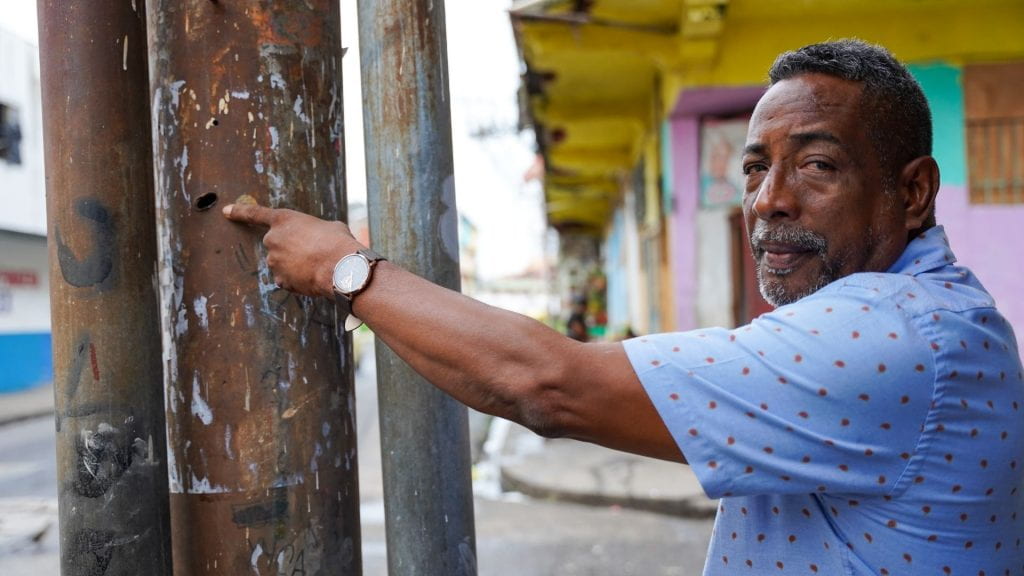
Ivis Caballero, now 42, was 9 years old when the invasion occurred. She recalls feeling trapped in her dark apartment as violence erupted around her.
“There was no choice. They said, ‘stay at home, stay at home, don’t leave,’ but if I stay inside, I am going to die of fire. But if I decide to go out, they will shoot,” Caballero said through a translator. “I thought we were going to die, I thought everyone was going to die. It is a privilege to be alive.”
The four nights of terror in El Chorrillo are unforgettable for those who lived through it, like Caballero. But Marulands said that for decades, Panama’s government has tried to shift the narrative around the invasion, painting it as a positive, pro-democracy revolution. Some political administrations, Marulands said, have even worked to wipe the invasion from the country’s collective memory.
“For years, the narrative of forgetting was directly something pushed by the Panamanian state. There were no commemorations, no statues, no days of mourning. And it was not taught in any of the schools,” Marulands said.
In 2016, the Panamanian government launched the Commission of December 20, 1989, an executive committee tasked with tracking down the identities of unaccounted victims of the invasion. When President Cortizo signed the National Day of Mourning into law earlier this year, he took a step that victims’ families and survivors have been demanding for decades.
Then on April 9 — 10 days after the National Day of Mourning was passed — the Panama Ministry for Public Works evaluated proposals from five construction and financing companies for the Renewal of the Urban Infrastructure of El Chorrillo, a new government-funded initiative to build new sidewalks, parks, sewage systems and drinking water networks in El Chorrillo. More than $60 million in public funding has been allocated for the project.
Though both the National Day of Mourning and public works projects represent substantial marks of progress for El Chorrillo’s community, decades of government neglect still render the residents skeptical of what change will actually occur.
Gilma Camargo is the lead attorney representing the victims of the invasion before the Inter-American Commission on Human Rights. She believes the actions of Partido Revolucionario Democrático – Panama’s current ruling political party – are superficial and fail to honor the memories of the victims themselves.
“The PRD is trying to dominate the matter of the invasion, where they want to be the victims, they want to be the heroes, they want the historical credit for whatever goes right with the subject of the invasion today,” Camargo said. “It’s a matter of historical appropriation.”
According to Camargo, Panama has always been hesitant to recognize and stand with invasion victims for fear of aggravating the U.S., their largest financial partner and international ally. Even with the new day of mourning, she said, the Panamanian government is failing to provide proper accountability for the perpetrators.
“They are trying to limit as much as possible that this day becomes an anti-imperialist day of consciousness, of what the United States did to us. They try to moderate the language and they try to [say] what they will do for victims, without any consultation with real victims,” Camargo said.
Memories of the invasion are inescapable for Milcedes Molina, 56. Everywhere he walks in El Chorrillo, he is reminded of the U.S. military tearing through the city blocks and bombarding his neighborhood from all directions.
“These helicopters, they started swarming the area. The boom boom boom noise of the helicopters, I still remember it,” Molina said through a translator, using his arms to demonstrate the whistling blades of military aircrafts hovering from above.
For Molina, it is hard to believe in a government promise of recognition and investment. His uncle was killed during the invasion. In the three decades since, he has felt dismissed by one administration after another. He doesn’t trust that any initiatives will have a meaningful impact on his neighborhood.
“If they waited 32 years to make this day a memorial day, do you believe they will give [El Chorrillo] money after 32 years? It’s because all these presidents in the government, they never lost their families. Now, they care about this only because it will help them,” Molina said.
The invasion
The decade preceding the 1989 invasion was a time of shifting diplomatic relations between Panama and the United States, whose long history dates back to U.S. construction of the Panama Canal beginning in 1903.
Panamanian military general and de facto dictator Manuel Noriega rose to power in 1983, two years after the death of Panama’s previous authoritarian leader, Omar Torrijos. Noriega held longstanding ties with U.S. intelligence, having worked as a CIA informant for nearly two decades including during his time as Panama’s military intelligence chief under Torrijos.
By the late 1980s, Noriega’s relationship with the U.S. deteriorated. His cooperation with American initiatives and foreign policy efforts dwindled, and his corrupt drug trafficking practices and immense personal wealth was further scrutinized.
“Noriega is a leader that came to power through dictatorship and force,” said Enrique Aviles, a history professor at the University of Panama. “He wasn’t a charismatic leader. He led through fire and blood, and he was very corrupt.”
In December 1989, after years of increasing tension and several failed American attempts to remove Noriega from power, President George H. W. Bush authorized a military strike to wipe him out.
Bush touted the invasion, codenamed Operation Just Cause, as a strategic move to promote democracy and protect the integrity of the Panama Canal. But Marulands believes the U.S. also had ulterior, self-serving motives for the invasion.
“The reason sold to the American public was to restore democracy in Panama. But the true objective was to destroy the Panamanian military, and this way, almost literally establish American hegemony in Panama. Now, Panama’s territorial defense, whether it be land, sea or air, would depend on the United States,” Marulands said.
The U.S. military launched the attack precisely at midnight on Dec. 20 and deployed more than 27,000 troops. The stated targets were military posts, but the surrounding neighborhood experienced indiscriminate violence. All these years later, Alva still struggles to comprehend why the U.S. military fired at unarmed residents.
“Why? Why? You see a house, and then you see someone who is not from headquarters, who is a civilian. Why do you kill them? It is so crazy,” Alva said.
One of the invasion’s lasting images is the raging fires that decimated El Chorrillo’s famous wood-frame buildings, leading to many civilian casualties.
“I saw how the [U.S. military] was burning the houses, they were throwing inside grenades and other things,” Contreras said.
In 2018, the Inter-American Commission for Human Rights found the U.S. guilty of multiple human rights violations in the invasion, including the right to life, liberty and personal integrity, right to protection for mothers and children and right to justice. It was a landmark ruling, Camargo said, because her group lacked support from the Panamanian government.
“It’s unprecedented in history that victims of an invasion sue the invaders in an international forum without the assistance of its own government,” Camargo said.
By Dec. 24, just four days after the invasion had begun, the U.S. had gained control over the majority of the country. And on Jan. 3, 1990, Noriega was captured and officially surrendered, ending the conflict. The exact number of deaths from the invasion is disputed. Marulands said that’s partially because the Panamanian government didn’t work to accurately record the death toll in the months and years following the invasion.
“The government that succeeded Noreiga didn’t have any motivation to investigate [the death toll], and they were encouraged by the United States not to. And the Bush administration didn’t want to believe that there were a lot of deaths,” Marulands said.
For over 30 years, various government and human rights initiatives have worked to find an accurate death toll of the invasion, but estimates still vary widely. The commission for the Defense of Human Rights in Central America estimates between 2,500 and 3,000 people were killed.
Today, the Inter-American Commission on Human Rights has yet to reach a firm conclusion on the number of deaths, citing a need for further investigation. Similarly, Panama’s internal commission, created six years ago, has still not announced any official death toll.
Rebuilding from ashes
Within days of the invasion, El Chorrillo fell into chaos.
“People were trying to take whatever things they can from supermarkets, businesses, it was a lot of looting,” Molina remembers.
Hundreds if not thousands of families lost their homes to fires. The area became increasingly dangerous, as gangs mobilized and neighborhood violence spiked, according to Aviles. And as the community’s inner workings deteriorated, the new government worked to rapidly rebuild a neighborhood left in shambles.
“The new democratic government, as soon as they arrived in power, created a very quick response to try to rebuild El Chorrillo,” Aviles said. “It allowed people to feel like, ‘Ok, this is going to be done fairly quick.’”
Today, El Chorrillo’s post-invasion buildings are positioned side by side with those that survived the attacks. Only a handful of wooden structures, which once comprised a large swath of El Chorrillo’s Afro-Caribbean architectural identity, are standing. Some buildings remain ashed by the fires, having never been rebuilt at all.
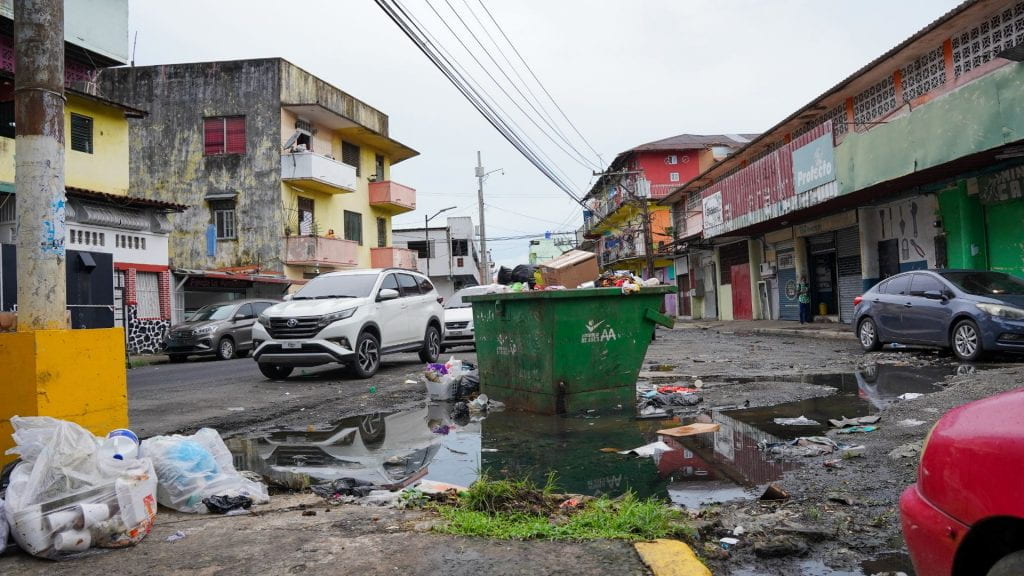
For some of El Chorrillo’s residents, the trauma made it impossible to stay.
“These people here, we are just the ones still left,” Alva said. “A lot of people left after the invasion, because the memories were too much.”
Maribel, who declined to share her last name, was one resident whose home was burned down. For the past six years, she has lived less than 100 feet from her former residence in temporary government housing.
“My house was completely destroyed, it was burned. I lived right there,” she said, pointing to a rusted white, concrete building across the street. She and other residents wait for new permanent housing to be built. But she doesn’t believe the new project will ever come to fruition.
“They have forgotten us in the place we are now,” Maribel said. “So we are just left here.”
When asked about the new $60 million infrastructure proposal to revitalize the city, Maribel scoffed.
“They said ‘we restored the town of Chorrillo.’ But we never received money, not here. They never came back here after maybe 10 years [following the invasion]. They never restored all of our buildings or gave us a better life,” Maribel said.
A demand for truth
Parque Aburridos, which directly translates to “park of the bored,” is anything but boring. It’s a covered pavilion on the eastern side of El Chorrillo, where community is built around a set of Dominoes tables. Parque Aburridos is one of El Chorrillo’s only communal structures that survived the invasion, and it encapsulates the neighborhood’s character and cultural past. Today, it is a lively place with a soundtrack of conversation, laughter and blaring reggaeton music.
“Noreiga would come here sometimes, and play Dominoes with the local people,” Contreras recalls.
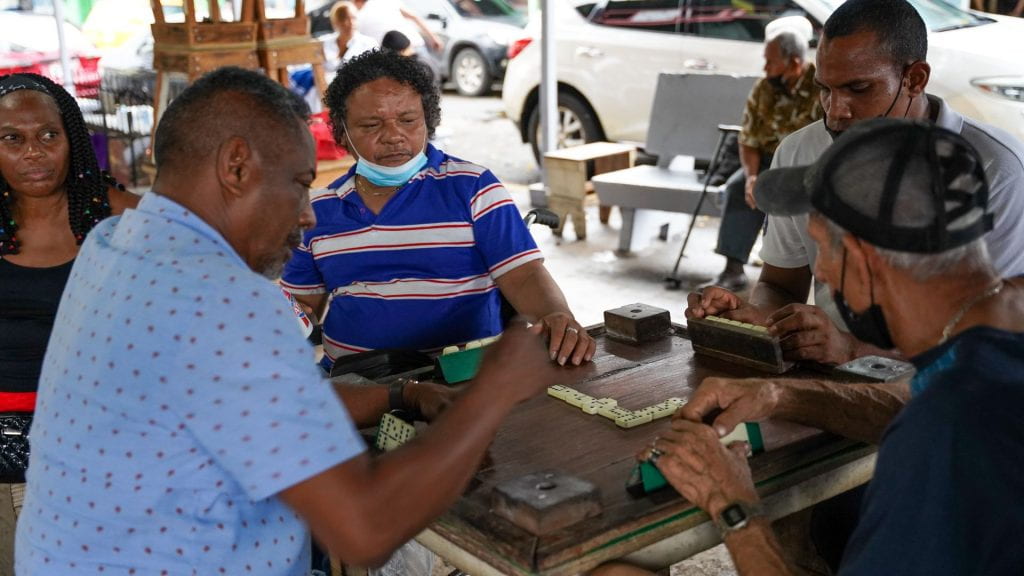
Parque Aburridos radiates joy, but its surroundings reflect a neighborhood still struggling economically. Streets surrounding the pavilion are filled with gaping potholes. Storefronts are boarded up and rusted and crumbling buildings reveal decades of neglect.
But beyond El Chorillo’s physical appearance, it’s the neighborhood’s outsized police presence that is most stark.
Squadrons of Policia Turismo, a division of the National Police of Panama focused on tourism, patrol El Chorrillo in cruisers and on motorcycles with the primary intent of keeping tourists from adjacent Casco Viejo out of the neighborhood. A second unit, the Policia Comunitaria or community police force, operates differently, by interacting directly with residents and embedding themselves in the neighborhood.
Jorge Enrique Montes is an elder statesman of the El Chorrillo community. He served for 25 years in the Panamanian military forces, including six under Noriega, where he was a unit chief. Montes no longer lives in the neighborhood but returns often.
“They should’ve made [Dec. 20] a memorial day the next year, right after the invasion. They must build a monument right here, in the park. So that way, you show you really respect it,” Montes said.
According to Camargo, symbolic memorials are an important step, but only if they spur tangible action and investment in the victims of the invasion.
“We are happy that we have the day [of mourning],” Camargo said. “We demand a lot more. And we demand that whatever memorial they build, it reflects the victims of the case, not members of the PRD.”
For Contreras, who survived the invasion with his pregnant wife and children beside him, the damage is both physical and emotional.
He undoes the buttons on his shirt, revealing scars under his shoulder blade and along his abdomen where the U.S. weaponry struck him as he dove to shield his family from danger.
Contreras doesn’t shy away from recounting some of his most traumatic days. He feels a duty to share his lived experiences with the next generation.
“Some parents, they’ll say, I don’t want to talk about this. And I understand. But my grandchildren, they always ask me ‘why did the invasion happen, if they only need to take one person out of the country,’” Contreras said, remembering. “And I tell them.”